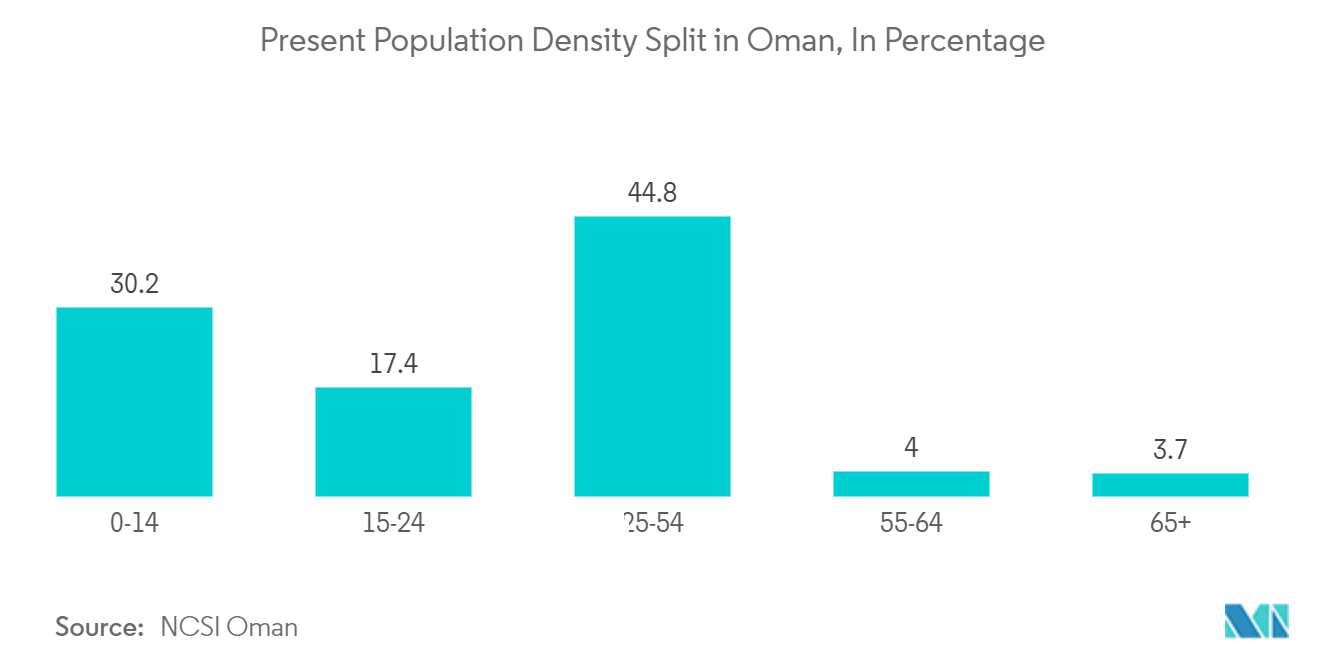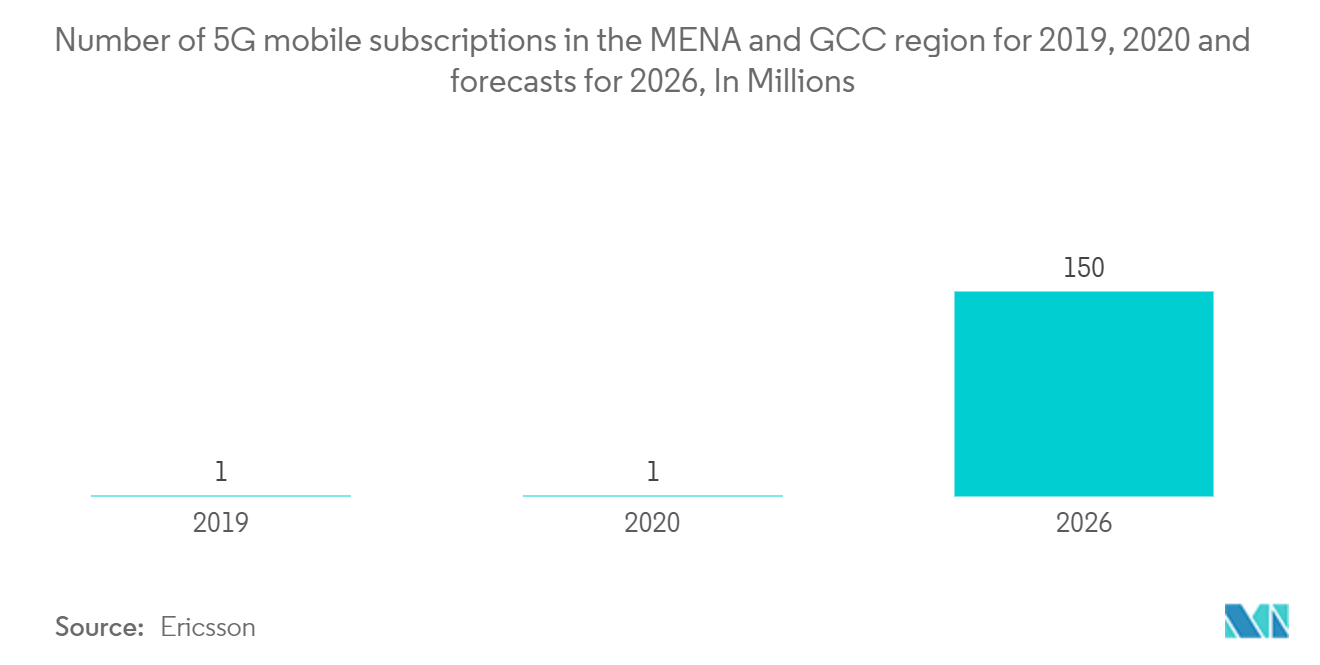Market Trends of Oman Telecom Industry
Growth in OTT Services
- Without a cable or satellite television subscription, entertainment films and TV series may be directly supplied to digital consumers using OTT platforms. Due to the considerable proportion of young people who utilize digital media (such as social, economic, OTT, and IoT), there would likely be a rise in demand for data services, which would help the Omani telecom industry. Favorable demographic trends are therefore promising for the home telecom industry. Over the past two years, the SVOD (subscription video on demand) industry has expanded quickly. In the current year, it is expected to rise across the country. According to Dataxis, this market's growth curve will soar over the following five years and is anticipated to have a 170% home penetration rate by 2026.
- The pandemic has expedited the country's adoption of streaming video content (OTT video) and music and increased interest in online gaming. With the start of the lockdown, the percentage of OTT video subscribers and their viewing time grew. Also, the growth in the OTT sector is attributable to partnering with leading telecom operators to simplify payment methods, localizing offers in terms of language and cost, and differentiating from rivals in specialized and premium categories to enable double-subscription and package bundles.
- Consumers now prefer video OTT services to watch live TV and on-demand content due to the fast expansion of high-speed internet and digital infrastructure. To ensure their interaction with the platform is smooth, immersive, and customized, the top OTT providers in the country have made considerable investments in content delivery systems. With the use of these technologies, clients may enjoy premium watching options. For example, via Jawwy TV's cloud-based solutions, which provide Ultra-HD and 4K content, subscribers may set up several accounts for each family member. This helps the service provider deliver personalized suggestions and parental restrictions.
- Telecom operators are entering adjacent markets like those for video services to monetize their networks and establish differences from their rivals. By doing so, they may raise ARPU and lower churn. Additionally, telecom carriers are frequently collaborating with several OTT video providers. This creates a win-win situation for both parties. It enables them to deal with only one partner and provides clients access to all the material they need in one location. While OTT providers contribute a multitude of expertise in delivering outstanding digital content directly to customers' devices for a top-notch watching experience, telecom operators bring a sizable customer base of connected people through a trusted brand. For instance, Ooredoo Oman partnered with Starz Playfor digital content.
- According to the Capital report on Oman Telecom Sector, Oman has an excellent demographic profile, with around 45% of the population between the ages of 25 and 54, reflecting the country's growing and youthful population. The people of these age groups are mainly attracted to the OTT and SVOD platforms as they have grown up with smartphones, social media, and video games, which provide finely tailored social, and interactive experiences.

5G Starts Taking Pace
- With a predicted acceptance rate of 49% by 2025 and a total subscriber base of 41 million, the GCC (Gulf Cooperation Council) area is outpacing other worldwide markets in implementing 5G technology. Oman's telecom providers, who launched 5G in 2019 and would have 45% of the population covered by it by 2021, are growing their 5G infrastructure at a rapid rate, much like other regional companies like STC. According to the GSMA, 4G adoption will peak next year when customers switch to 5G contracts. In addition, telecom providers are preparing for a more comprehensive route for technologies like 5G, IoT, and cloud computing as part of Oman's Vision 2040 to satisfy the nation's insatiable demand for mobile and internet services.
- In Feb 2022, Ookla and the Telecommunications Regulatory Authority of the Sultanate of Oman (TRA) are engaging in a collaborative arrangement as part of TRA's aim to leverage the latest technologies and up-to-date insights for understanding mobile and fixed broadband performance across Oman. This comes when the 5G rollout in the country is gaining momentum, and Ookla's enterprise solutions and first-party data are set to empower TRA in assessing the adoption of 5G networks in the Sultanate. This collaboration should help drive network improvements in Oman, delivering significant new value to local mobile operators who build the networks and the consumers who rely on them.
- With several initiatives for digital transformation in various industries already underway, the commercial segment is also anticipated to offer the most significant incremental potential in the 5G era. In certain markets, the average 5G data usage is 2.6 times higher than the average 4G consumption. A similar development is anticipated in Oman's 5G data consumption, which would boost service revenues for telecom carriers. Alongside Oman's expanding 5G network, 5G Fixed Wireless Access (FWA) delivering fixed internet services has continued to grow quickly, and the operators are seeking to spend actively in growing this 5 G network.
- With its vast network capacity and extremely low latency, 5G is the essential enabler for Industry 4.0 technologies, including IoT, cloud computing, big data & analytics, augmented reality, and artificial intelligence. Telecom firms like Omantel and Ooredoo are constantly laying the foundation to assist the public and business sectors in taking advantage of the expanding opportunities brought on by technological advancements. The commercial introduction of 5G for fixed home internet and mobile in Oman was initially announced by Omantel. With expanded network coverage, flexible options, and solid partnerships, the firm keeps strengthening its position as the nation's 5G leader.
- Regarding the quickest 5G download speed, Ooredoo beat Omantel. According to an Ookla report, during Q3 of last year, Ooredoo also had the fastest 5G in Oman at 346.37 Mbps beating Omantel's 228.25 Mbps median 5G download speed. The closest median 5G upload speed for Q3 of last year was between Ooredoo and Omantel, achieving median upload speeds of 27.37 Mbps and 24.78 Mbps, respectively. Also, in terms of 4G availability, Ooredoo bested Omantel. However, Omantel triumphed in terms of 5G availability. Compared to Omantel's 78.4%, Ooredoo had the greatest 4G availability at 84.3%. There was no statistical winner for 5G availability. However, Omantel and Ooredoo both achieved 8.1% and 7.4%, respectively, in Q3 of last year.
- According to an Ericsson report, the anticipated number of 5G mobile subscriptions in the Middle East and North Africa (MENA) and Gulf Cooperation Council (GCC) for the forecasts of 2026 is 150 million and 62 million, respectively. Global digitization was expedited by the pandemic, which also emphasized the value of internet access and attributed to this growth.


